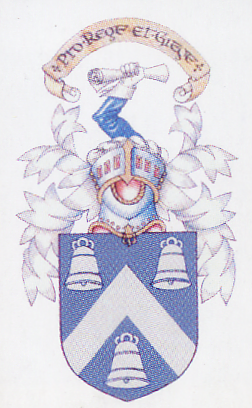
The Madras College Archive

|
|
The Madras College Archive |
|
|
Former Pupil Biographies Major General James Peattie Morgan (1835 - 1909) He came to Madras College in 1849 and was a distinguished pupil of Dr. Lonie. He was first prizeman in Mathematics and Natural Philosphy at St Andrews University which he attended after leaving school. During the Crimean War in 1855, the Government intimated that they would receive applications for commissions in the Artillery and Royal Engineers from candidates willing to submit themselves to a competitive examination. Young Morgan resolved to enter the competition, and passed the examination so creditably that out of 150 candidates he was placed ninth in the successful list. He was commissioned as a Lieutenant in the Royal Artillery in September 1858 and was dispatched to India on the outbreak of the Indian Mutiny. He subsequently held appointments such as Government Superintendent at Armstrong's gun factory and Assistant Superintendent of the Royal gunpowder factory at Waltham Abbey. In October 1887 he retired with the rank of Major-General, having during his term of service risen through all the intermediate ranks. He retired to Elie, where he lived a quiet life, though he took a considerable part in public affairs.
"Death of an Old Madras College Pupil.
At its close he went to China as a member of the expedition under Lord
Elgin and Sir Hope Grant. Here he was present at the assault on the Taku
forts and fired the gun which blew up one of them. At Pekin he made the
acquaintance of the late General Gordon, with whom he became on terms of
intimate friendship — drawn to that officer no doubt by a similarity of
character and religious feeling. When the army was encamped before Pekin,
awaiting the reply to to the ultimatum despatched by Lord Elgin to the
Chinese authorities, Morgan witnessed the feat of Gordon, who painted
white the part of the wall on which the guns would play in the event of
it becoming necessary to force an entrance into the city.
The hardships endured in active service so affected Lieutenant Morgan's
health that he was invalided home. Subsequently he held appointments
such as Government Superintendent at Armstrong's gun factory and
Assistant Superintendent of the Royal gunpowder factory at Waltham
Abbey. In October 1887 he retired with the rank of Major General,
having during his term of service risen through all the intermediate
ranks. He took up his abode at Elie, where he loved a quiet life, though
he took a considerable part in public affairs. He was buried on the 7th
June, in the churchyard of Newburn, his native parish." |